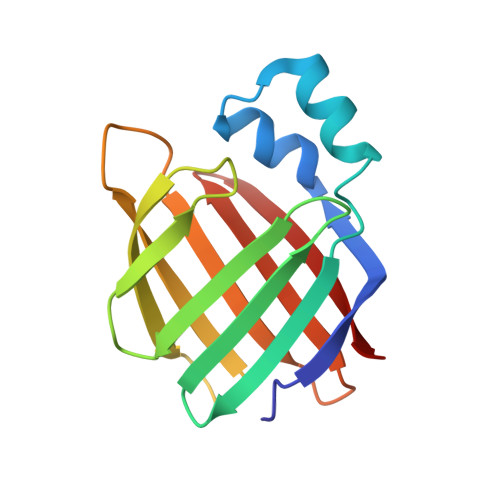Rational Design of a Colorimetric pH Sensor from a Soluble Retinoic Acid Chaperone.
Berbasova, T., Nosrati, M., Vasileiou, C., Wang, W., Lee, K.S., Yapici, I., Geiger, J.H., Borhan, B.(2013) J Am Chem Soc 135: 16111-16119
- PubMed: 24059243
- DOI: https://doi.org/10.1021/ja404900k
- Primary Citation of Related Structures:
4I9R, 4I9S, 4M6S, 4M7M - PubMed Abstract:
Reengineering of cellular retinoic acid binding protein II (CRABPII) to be capable of binding retinal as a protonated Schiff base is described. Through rational alterations of the binding pocket, electrostatic perturbations of the embedded retinylidene chromophore that favor delocalization of the iminium charge lead to exquisite control in the regulation of chromophoric absorption properties, spanning the visible spectrum (474-640 nm). The pKa of the retinylidene protonated Schiff base was modulated from 2.4 to 8.1, giving rise to a set of proteins of varying colors and pH sensitivities. These proteins were used to demonstrate a concentration-independent, ratiometric pH sensor.
Organizational Affiliation:
Department of Chemistry, Michigan State University , East Lansing, Michigan 48824, United States.















